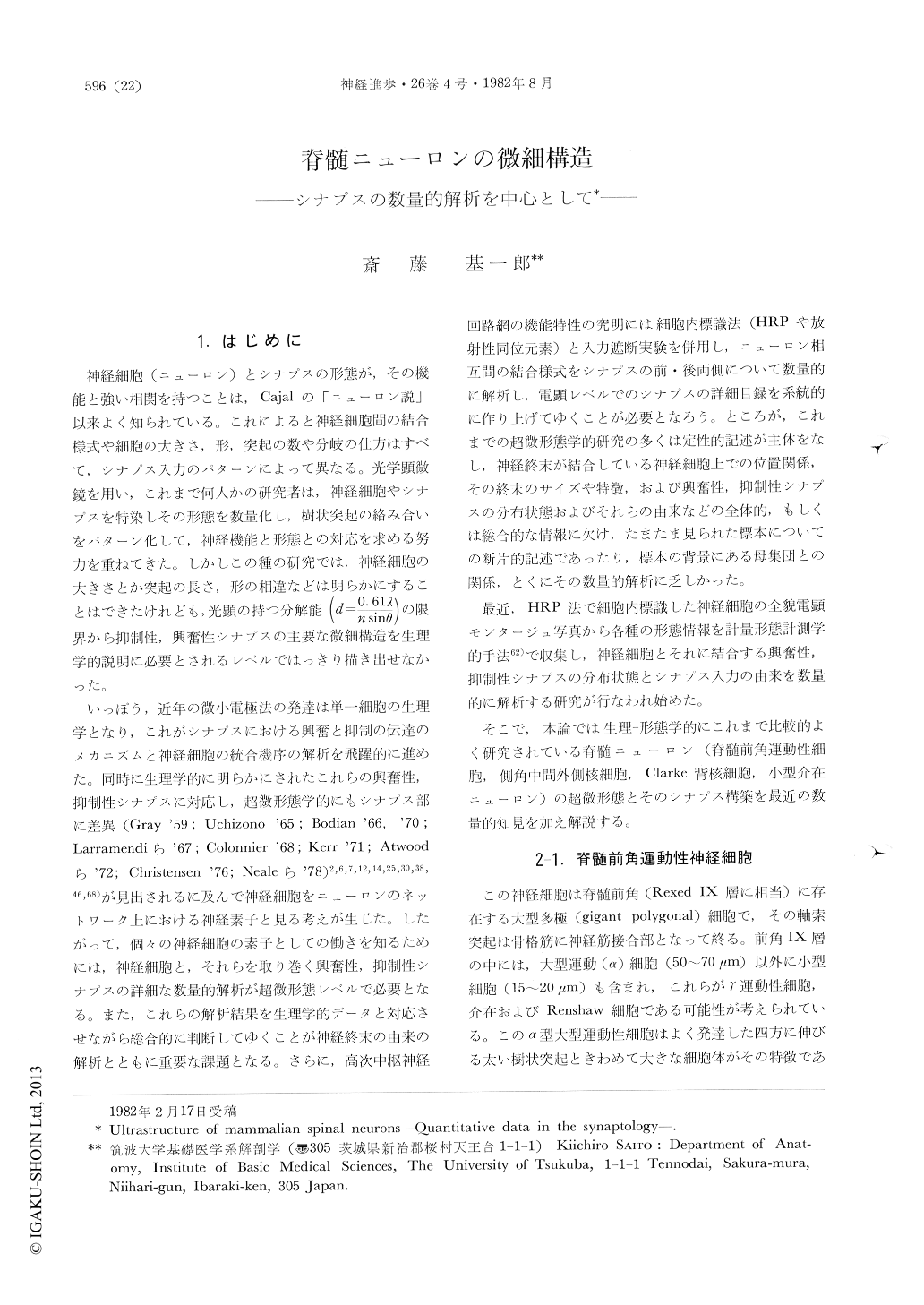Japanese
English
- 有料閲覧
- Abstract 文献概要
- 1ページ目 Look Inside
I.はじめに
神経細胞(ニューロン)とシナプスの形態が,その機能と強い相関を持つことは,Cajalの「ニューロン説」以来よく知られている。これによると神経細胞間の結合様式や細胞の大きさ,形,突起の数や分岐の仕方はすべて,シナプス入力のパターンによって異なる。光学顕微鏡を用い,これまで何人かの研究者は,神経細胞やシナプスを特染しその形態を数量化し,樹状突起の絡み合いをパターン化して,神経機能と形態との対応を求める努力を重ねてきた。しかしこの種の研究では,神経細胞の大きさとか突起の長さ,形の相違などは明らかにすることはできたけれども,光顕の持つ分解能(d=0.61λ/nsinθ)の限界から抑制性,興奮性シナプスの主要な微細構造を生理学的説明に必要とされるレベルではっきり描き出せなかった。
いっぽう,近年の微小電極法の発達は単一細胞の生理学となり,これがシナプスにおける興奮と抑制の伝達のメカニズムと神経細胞の統合機序の解析を飛躍的に進めた。
Abstract
An increasing amount of data concerning excitatory and inhibitory synaptic transmission mechanisms and the integration of nerve cells has been obtained during the past several decades by the development of microelectrode techniques and by physiological measurements. This functional data at cellular level must be supplemented by quantitative data about ultrastructural parameters. Uchizono (1965) suggested in his study of the cerebellar cortex that S-type boutons related to excitatory in functions are located on Purkinje cell dendrites, while F-type representing inhibitory synapses are on the soma.

Copyright © 1982, Igaku-Shoin Ltd. All rights reserved.


